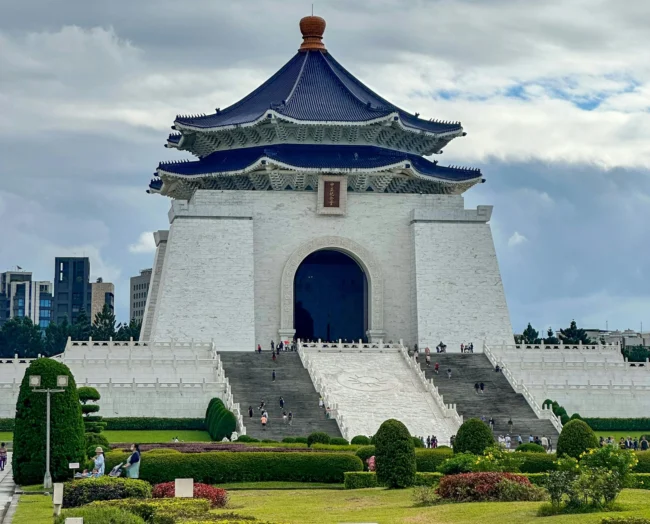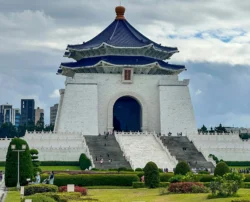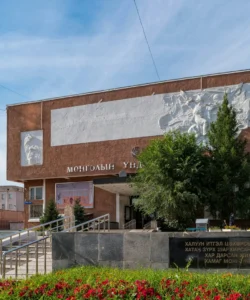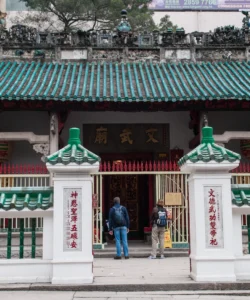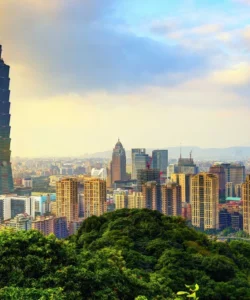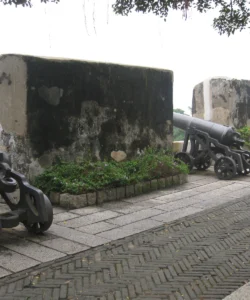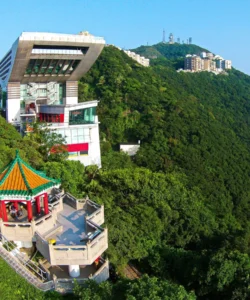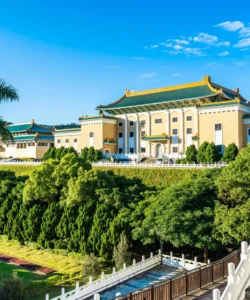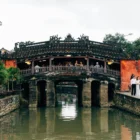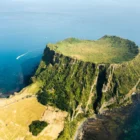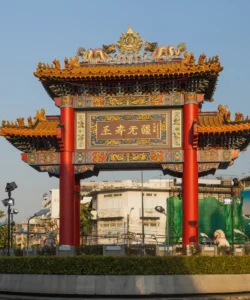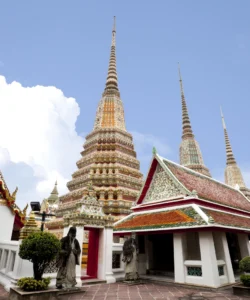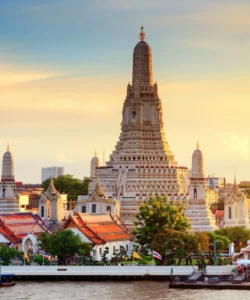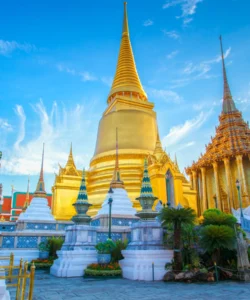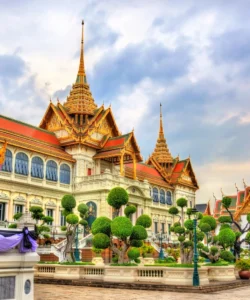The National Chiang Kai-Shek Memorial Hall (中正紀念堂, Zhōngzhèng Jìniàntáng) is a prominent national monument and major tourist attraction in Taipei, Taiwan. Erected in memory of Chiang Kai-shek, the former President of the Republic of China (Taiwan), it stands as a colossal architectural marvel within a vast park, embodying both a tribute to a historical figure and a symbol of Taiwan’s complex journey from authoritarianism to democracy.
Name: National Chiang Kai-Shek Memorial Hall (國立中正紀念堂). Often simply referred to as CKS Memorial Hall.
Address: No. 21, Zhongshan South Road, Zhongzheng District, Taipei City, Taiwan 10048. It is located at the eastern end of Liberty Square.
How to get there:
The Chiang Kai-Shek Memorial Hall is centrally located and extremely well-connected by Taipei’s efficient MRT system:
- By MRT (Mass Rapid Transit): This is the most convenient way. Take the Tamsui-Xinyi Line (Red Line) or Songshan-Xindian Line (Green Line) to Chiang Kai-Shek Memorial Hall Station (中正紀念堂站). Multiple exits (e.g., Exit 5) lead directly into Liberty Square, from where the Memorial Hall is prominently visible.
- By Bus: Numerous city bus routes have stops around Liberty Square and the Memorial Hall.
- By Taxi/Ride-Sharing Services: Taxis are readily available throughout Taipei and can drop you off directly at the Memorial Hall.
- Walking: Its central location means it’s often within walking distance from nearby areas like Daan Park or parts of Ximending.
Landscape and Architecture:
The Chiang Kai-Shek Memorial Hall is part of a grand, open public space, showcasing a distinct architectural style:
- Liberty Square (自由廣場): The Memorial Hall is situated at the eastern end of the sprawling Liberty Square, a vast public plaza flanked by two other impressive buildings: the National Theater (south) and the National Concert Hall (north). The square itself is a powerful symbol, having been renamed from “Democracy Square” to “Liberty Square” in 2007 to reflect Taiwan’s democratic transition.
- The Memorial Hall Building: The main structure is a towering white marble building with a distinct blue octagonal roof and a red-tiled foundation. These colors (blue, white, and red) symbolize the colors of the national flag of the Republic of China (Taiwan). The octagonal shape is rich in Chinese symbolism, representing the number eight (considered auspicious for good fortune and prosperity).
- 89 Steps: Two sets of white stairs, each with 89 steps, lead to the main entrance. These steps symbolically represent Chiang Kai-shek’s age at the time of his death.
- Bronze Statue: Inside the main hall on the upper level, a colossal bronze statue of Chiang Kai-shek sits, facing west (symbolically towards mainland China and the Presidential Office Building). The statue is flanked by four pillars representing his leadership principles.
- Ceiling Design: The ceiling above the statue features a unique design with a white sun on a blue background, mirroring the “Blue Sky with a White Sun” emblem of the Republic of China.
- Changing of the Royal Guard Ceremony: A highly popular attraction is the ceremonial Changing of the Guard performed by honor guards from various branches of the Republic of China Military Police in front of Chiang Kai-shek’s statue every hour.
- Exhibition Halls: The ground level of the Memorial Hall houses a library and a museum documenting Chiang Kai-shek’s life and career, with exhibits detailing Taiwan’s history and development, including his personal belongings and vehicles.
- Gardens and Ponds: The wider Memorial Park surrounding the main building features beautifully landscaped Chinese-style gardens, ponds, and walkways, offering serene spaces for relaxation and contemplation.
- Traditional Chinese Architectural Elements: The entire complex, designed by architect Yang Cho-cheng (who also designed the Grand Hotel), incorporates many elements of traditional Chinese palace and temple architecture, giving it a majestic and classical feel.
What makes it famous:
Chiang Kai-Shek Memorial Hall is famous for:
- Monument to Chiang Kai-shek: It is the primary and most significant monument commemorating Chiang Kai-shek, a pivotal figure in 20th-century Chinese and Taiwanese history, recognized for his role as the former President of the Republic of China.
- Iconic Taipei Landmark: Its grand scale, distinctive architecture, and central location make it one of the most recognizable and frequently visited landmarks in Taipei.
- Daily Changing of the Guard Ceremony: This precise and disciplined military ceremony is a major draw for tourists, attracting crowds every hour.
- Liberty Square’s Democratic Significance: Beyond its initial purpose, Liberty Square (where the Memorial Hall stands) gained significant fame as a crucial site for mass gatherings and pro-democracy demonstrations in the 1980s and 1990s, becoming a powerful symbol of Taiwan’s democratic transition. This evolution from an authoritarian symbol to a space for freedom of expression adds a profound layer to its meaning.
- Architectural Grandeur and Symbolism: Its imposing white marble structure, blue octagonal roof, and symbolic elements (like the 89 steps) are celebrated for their design and the cultural meanings they convey.
- Cultural Hub: The surrounding National Theater and National Concert Hall within Liberty Square make the complex a major cultural and artistic venue for performances and exhibitions.
Differences from some other wonders:
Chiang Kai-Shek Memorial Hall stands out from many other memorials and grand public squares due to several key distinctions:
- Political Contestation and Evolving Meaning: Unlike memorials to figures with universally acclaimed legacies, the Chiang Kai-shek Memorial Hall exists within a complex and evolving political landscape in Taiwan. While built as a tribute, it has become a site of heated public debate and contested memory regarding Chiang Kai-shek’s authoritarian rule versus his contributions. This ongoing political and symbolic re-evaluation makes it a dynamic and unique memorial, contrasting with more stable or purely celebratory monuments.
- Transformation into a Democratic Symbol: Its unique transformation from a symbol of a former authoritarian leader into a symbol of Taiwan’s democratic movements (particularly through its public plaza, Liberty Square) is a powerful narrative of political change, a rare characteristic for such a monument.
- Blend of Authoritarian Design and Democratic Use: The architecture itself is grand and somewhat imposing, typical of monuments to powerful leaders, but its surrounding public space has been embraced by democratic movements. This juxtaposition of authoritarian design with democratic function is a distinct feature.
- Daily Public Military Ceremony: While other memorials might have honor guards, the daily, hourly Changing of the Royal Guard ceremony is a highly visible and regular public spectacle that draws significant crowds and is central to the visitor experience, making the military aspect very prominent.
- Cultural-Architectural Ensemble: The inclusion of two grand performing arts venues (National Theater and National Concert Hall) as integral parts of the Liberty Square complex makes it a comprehensive cultural and artistic hub alongside its memorial function, which is often not seen in other standalone memorials.
- Unique Colors and Symbolism: The specific use of the national flag’s colors (blue roof, white walls, red foundation) and the auspicious number eight throughout its design are culturally specific architectural choices that give it a unique visual identity among global memorials.
In essence, Chiang Kai-Shek Memorial Hall is a monumental and architecturally striking landmark that serves not only as a grand tribute to a historical figure but also as a powerful and continuously evolving symbol of Taiwan’s complex past and its vibrant democratic present.
